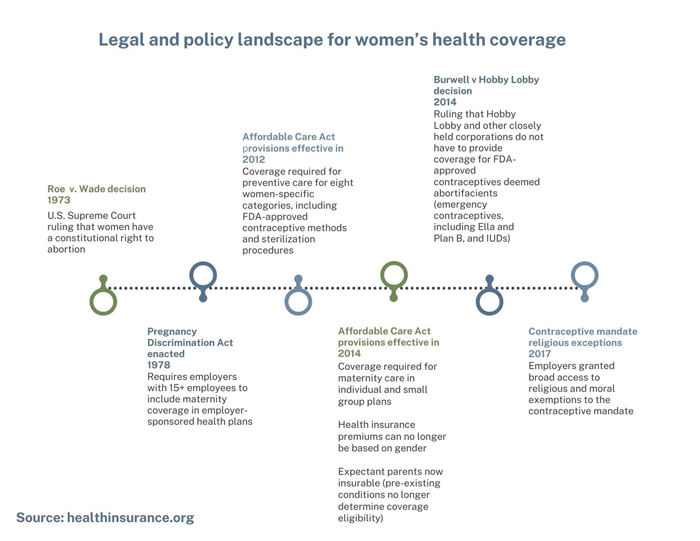Women’s health coverage
For women in the United States, access to affordable coverage in the individual health insurance market has improved markedly over the past decade, largely due to coverage improvements and consumer protections. provided by the Affordable Care Act.
Prior to the implementation of the ACA – largely from 2014 – women faced many barriers to coverage:
- Previously, more than half of individual plans charged higher premiums for a 40-year-old non-smoking female than for a 40-year-old male smoker – for exactly the same coverage.
- More than 90% of individual health plans provided no routine maternity benefits.
- In all but five states, being pregnant was a pre-existing condition that prevented a woman from purchasing individual health insurance.
- Many individual health plans offered no contraceptive coverage.
- Coverage of preventive care for women varied widely from state to state.
Suggested reading:
We hope you’ll use this guide to better understand how coverage has improved and what to expect when it comes to health care coverage for women when choosing a health plan.
Preventive care for women under the ACA
Prior to the implementation of the Affordable Care Act, preventive care coverage for women varied widely from state to state. But as of August 2012, all health plans (other than grandfathered health plans) were required to provide coverage for certain categories of preventive care specific to women:
- well-woman visits
- Screening for gestational diabetes
- HPV test
- Domestic violence screening and counseling
- HIV testing and counseling for sexually transmitted infections
- Breastfeeding supplies
- Advice on contraception and family planning
(Note that additional preventive care mandates, including preventive care for children and all adults as well as additional preventive care specific to women, went into effect in 2014.)
Coverage of health services for women
Maternity care coverage
Prior to 2014, only 12% of individual market health plans included maternity benefits. But the Affordable Care Act changed that. Maternity care is one of the essential health benefits that must be included in all individual and small group policies.
This means that an expectant parent can now obtain coverage in every state during an open enrollment or during a special enrollment period triggered by a qualifying event. And women no longer pay higher premiums than men, despite the fact that every new major medical insurance policy includes maternity coverage.
Fertility Treatment Coverage
Fertility treatment is not a core benefit of the Affordable Care Act – and infertility treatment coverage is not mandated by the ACA or any other federal law. But some states have regulations that go beyond the minimum requirements set by the federal government with their own laws, regulations, and mandates.
These state rules apply only to state-regulated plans, which include health plans that individuals and businesses purchase from an insurance company. But self-insured, employer-sponsored health plans aren’t subject to state insurance rules.
Recommended reading:
Abortion coverage
Abortion coverage is neither mandatory nor prohibited under the ACA. But federal funds cannot be used to pay for an abortion unless the situation involves rape, incest or danger to the mother’s life. Coverage for other abortions varies widely between health plans.
Contraceptive coverage
The Affordable Care Act has improved access to highly effective, long-acting contraceptives without cost barriers. Under the ACA, health policies that went into effect on or after August 1, 2012 are required to cover — without cost sharing — at least one version of every FDA-approved contraceptive method for women. This includes sterilization, IUDs, and implants, which often had considerable upfront costs before ACA.
Recommended reading:
Recent News
Access to health care services for women has been greatly expanded under the ACA. This was due not only to the ACA’s coverage mandates (for things like preventative care and maternity care), but also because the ACA enabled many more women to have health coverage. The expansion of Medicaid, the employer mandate, and access to subsidized coverage in the health insurance exchange/marketplace have all played a role in this regard.
But coverage and women’s health care continue to be contentious issues, and the rules continue to evolve over time.

